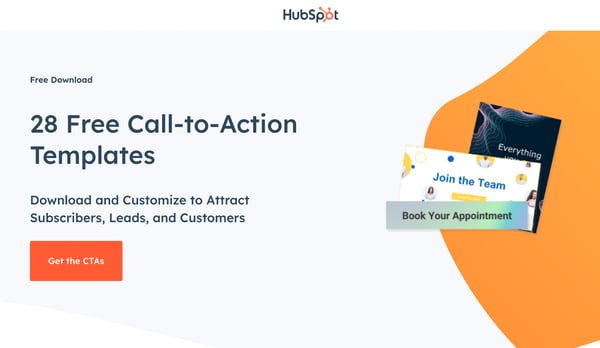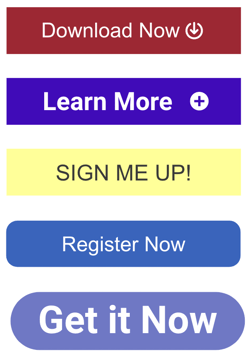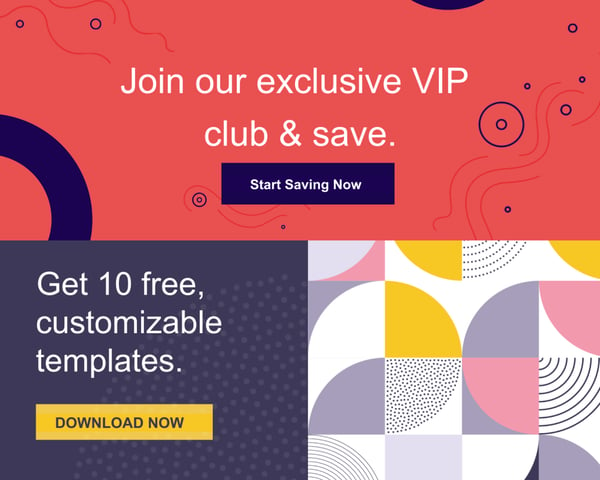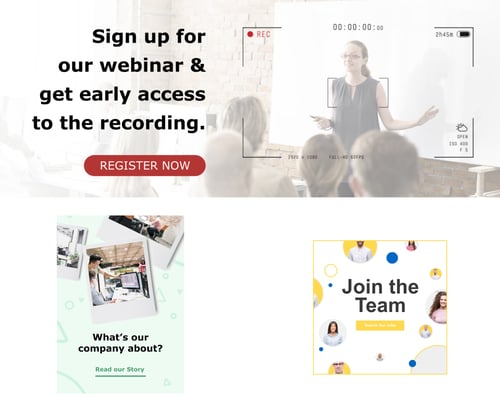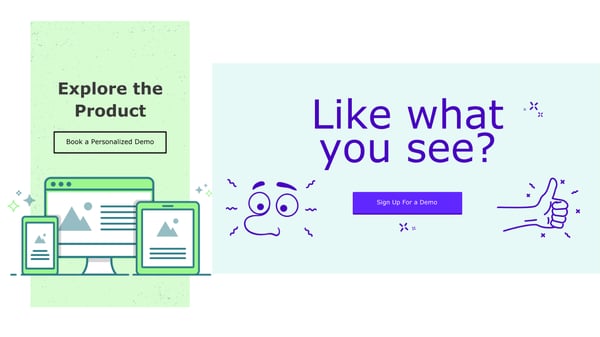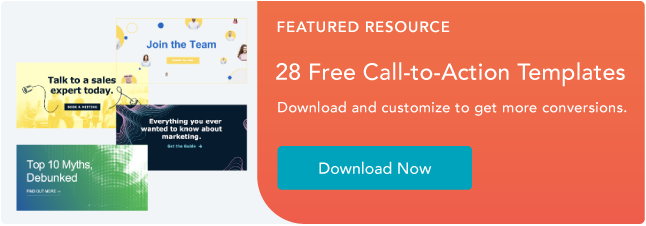Gaining more followers on Instagram is key to successfully scaling your marketing efforts on the platform. But how do you increase followers on Instagram, especially if you have fewer than a thousand?
![New Data: Instagram Engagement Report [Free Download]](https://i4lead.com/wp-content/uploads/2023/04/9294dd33-9827-4b39-8fc2-b7fbece7fdb9.png)
It’s no secret that opportunities are continuing to grow on Instagram for Business. Approximately 90% of Instagram’s 1 billion active monthly users follow a business account on the platform, and there are more than 200 million business accounts.
But here’s the deal: Unless you’re famous, it’s really hard to amass a huge following on Instagram without some hard work. It’s especially difficult if you’re a small business using Instagram marketing to gain more clients. How do you even get started?
Luckily, you can do a few things right away to collect at least 1,000 quality followers for your personal or professional Instagram account. It’s all about knowing where to invest your time and effort. In this post, we’ll discuss a few strategies to help you gain those followers, from creating a follow-worthy Instagram profile to using contests and staying true to your brand.
Before you think about optimizing your Instagram profile, it’s essential to gather the tools and resources you need to hit the ground running.
To get more followers on Instagram, you’ll need to post consistently over time while using best practices. If you’re new to Instagram marketing, this can be challenging. For that reason, we’ll first cover some general tools to help you level up, then go into actionable tips once you’ve set up and optimized your account.
Even if you’ve never tried your hand at Instagram marketing, and even if you don’t have a team of content creators, you can grow your Instagram account with the right tools. With that said, let’s jump right in.
Download a Free Content Calendar to Grow Your Instagram Followers
Most of the work of increasing your Instagram followers happens before you open the app. For one, you must plan to publish new Instagram posts consistently, and even though it’s tempting to post when inspiration strikes, it’s essential to find a rhythm that helps you capitalize on trends. Not to mention it will also help you nurture a community that will expect specific posts from you at a specific time.
Consistently planning, writing, and publishing Instagram posts will require an exceptional level of organization. For that reason, we recommend using a social media content calendar to plan your posting schedule ahead of time.
Here are some resources you can use to jumpstart your Instagram content creation process:
 Get Started with HubSpot’s Social Media Tool
Get Started with HubSpot’s Social Media Tool
A social media management tool will help you post consistently without the extra work of logging into Instagram each time. If you’re serious about increasing your Instagram following while minimizing work, then you want to schedule your posts using a tool and then let the software do the rest.
Instagram has a wide variety of post types, from the traditional square photos to Stories to the more recent Reels. This wide variety gives us a lot of options for growing our followers, but can be daunting or overwhelming without a tool to help. You can always post manually, but scheduling your posts in advance can help you leverage these content formats more effectively.
Here are more articles to help you choose the right tool and learn how to schedule Instagram posts:
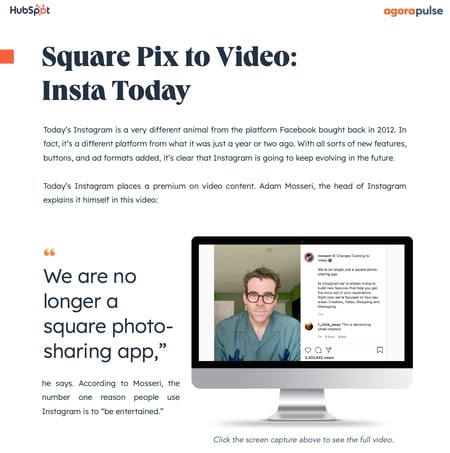 Download a Free Kit to Help You Grow Your Instagram Profile
Download a Free Kit to Help You Grow Your Instagram Profile
A series of templates and how-to guides are an essential addition to your Instagram growth toolbox. HubSpot’s kit will allow you to expedite content creation and stay on top of Instagram’s latest trends, including its recent shift from static photos to short videos.
Having this on hand is helpful especially if you’re new to Instagram content creation, or don’t know how and where to start. At this point, you should also arm yourself with tips and tricks for Instagram. Here are a few articles to help you out:
4. Make your account into a business profile.
While you could technically grow using just a personal profile, we recommend turning your account into an Instagram business profile, or starting one anew. This will give you access to Instagram Insights, which will allow you to understand how quickly your following is growing and how well your strategy is working.
Even if you only plan to become an independent content creator, you should still consider operating your account as if it were a business.
To switch from a personal to a business account, take the following steps:
- On the Instagram app, go to your profile.
- Tap the Menu hamburger button on the upper right-hand corner.
- Tap Settings on the pop-up.
- Tap Account.
- At the bottom, tap Switch to professional account.
You’ll then have the option to switch entirely to a business account or to stay as a professional account.
5. Customize your Instagram for Business profile.
Next, customize your Instagram profile to make it look good. Tell your potential followers who you are, and give them a reason to follow you.
How? Start by making sure your username is recognizable and easily searchable – like your business name. In the example below, The Journal Shop uses the username @thejournalshop.
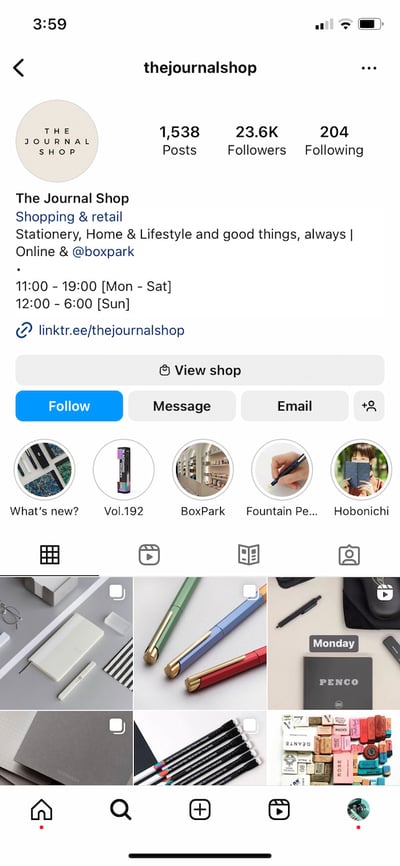
If your business name is already taken, try keeping your business name as the first part of your username so that people searching for your business are more likely to come across you. For example, the Australian activewear line Lorna Jane uses the username @lornajaneactive.
Below are more Instagram profile optimization tips.
Step 1. Choose a profile picture that’s on-brand with your other social networks, like your company logo.
Step 2. Fill your bio with delightful, actionable, and information about your brand. Information like this lets people know what you’re about and gives them a reason to follow you. Include who you are and what you do, and be sure to add a hint of personality.
Here are a few examples for inspiration:
- @cheekbonebeauty: “Less waste. Ethical and safe ingredients.”
- @oreo: “Playful moments from your favorite cookie.”
- @mrsbrittanyhennessy: “Helping Influencers go beyond #sponcon and create sustainable businesses.”
- @CalifiaFarms: “Something different, something better. Let us show you what plants can do.”
- @coragedolls: “Elevating, educating, & encouraging girls of color to be unstoppable with dolls that finally look like her.”
Step 3. Add a link tree to your bio to make it easy for people to go straight from Instagram to your other platforms if they want to. The space allotted for URLs is precious real estate. When you receive 10,000 followers, you can add links to your Instagram Stories.
Until then, your bio is the only place within Instagram where you can place clickable links, so use it wisely (ever heard the line “link in bio”?). We recommend using a shortened, customized Bitly link to make it more clickable.
Step 4. Enable notifications so you can see when people share or comment on your photos. This’ll let you engage with them more quickly — just like a lot of companies do on Twitter. To enable notifications, go to “Options” and then “Push Notification Settings.” Select “From Everyone” for every category.
A word to the wise: We don’t recommend you link your Instagram account to Twitter and Facebook (or other social media platforms) for automatic posts. Because every platform caters to a different audience and requires different types of posts.
6. Designate an experienced content creator.
Just like there should be one (maybe two) people managing your other social media accounts, there should only be one or two people managing your Instagram account.
If possible, choose someone with experience on the platform who will “get” it — and be sure they stay updated on all new features Instagram has to offer from Reels to Instagram Shopping.
That said, you can also learn how to become a content creator for Instagram by learning how to become a digital creator, downloading content creation templates, and pursuing an Instagram Marketing certification.
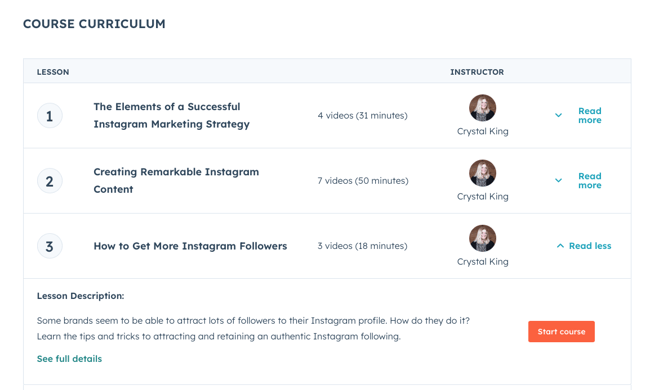
Learn How to Increase Followers with HubSpot’s Free Instagram Marketing Course
Alternatively, you can hire freelance content creators from marketplaces such as:
As to what gets specifically posted: You’ll have a lot of freedom if you’re an entrepreneur or solo professional. If you work for a large organization, you might find that a lot of people want a say in what’s posted. That’s when an organized social media request form or guidelines document comes in handy.
This document should inform people how to request a post on your Instagram account, when to post it, what the value of the post is, and why your company should post it.
7. Follow photography and editing best practices.
On Instagram, post quality matters. A lot. Your Twitter followers might forgive a few bad tweets, but a bad photo on Instagram is a big no-no.
Fortunately, you don’t have to take a photography course to be a good Instagram poster — nor do you have to practice for weeks before you start. But you should get familiar with basic photography tips and photo editing apps.
Photography Best Practices
Since Instagram is a mobile app, chances are, some content you post to Instagram will be taken on your mobile device. That’s expected.
If your budget allows, consider investing in professional photography for your Instagram photos, as that will elevate your profile. Otherwise, a smartphone and a few editing apps will do.
- Focus on one subject at a time.
- Embrace negative space.
- Find interesting perspectives.
- Look for symmetry.
- Capture small details.
- Make your followers laugh.
Edit photos before you post.
Instagram has some basic editing capabilities, but oftentimes, they aren’t adequate to make visuals really great.
Most of your photos should go through at least one or two photo editing apps on your mobile phone before you open them on Instagram. Some options include:
Create an Instagram theme.
Additionally, consider creating a cohesive Instagram theme across your feed, so anyone visiting your account for the first time can get a sense of your brand. The below example from the @the.plottery uses similar typography and purple colors all throughout.

8. Adhere to a regular posting schedule.
Once you’ve created and optimized your profile, have someone managing it, and have your creative assets ready, it’s time to start posting. We’ve already shared some resources to get started, but it’s worth going it over again, because posting consistently is what will have the largest impact on your follower count.
It’s a good idea to have a solid number of great posts up — maybe 15 or so — before you start engaging people and working down this list. That way, when people visit your profile, they’ll see a full screen of photos and will know you’ll post great content regularly.
If you haven’t already, download this social media content calendar template and plan out your posts. It’s best to build a backlog of content ready a few days or weeks ahead of the publishing date.
This will ensure you always have content during holidays, vacations, and even creative blocks.
Keep your target persona in mind as you plan out your posting schedule, as that can drastically impact your posting timing and frequency — especially if you’re targeting an audience in a different time zone. (Download this free template for creating buyer personas if you don’t have a few already.)
Optimizing your schedule for your specific audience might take time and experimentation.
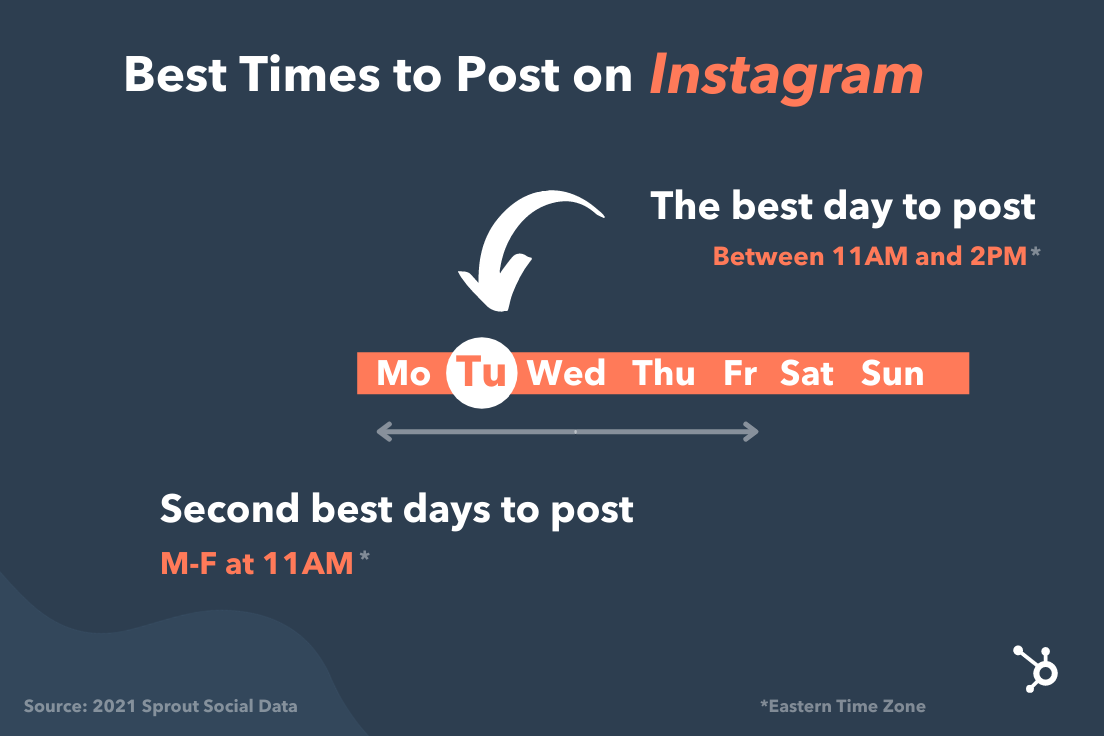
Experiment with these times and days to see what works with your audience. You may find that your target users are most active and engaged at different times.
9. Allow outside contributors to curate your content.
Although it’s best to have only one or two people manning your account, one or two people can’t be everywhere at once taking photos. What about that fun sushi night the engineers had last night? Or the event your head of sales spoke at earlier this week?
There’s a whole breadth of content you’ll want to post to Instagram, and more often than not, one person won’t be able to keep track of it all.
One solution? Create a system where you can curate photos and content from members of your team.
There are a few ways to do this. The first option is to create a specific email address for employees to send their photos, short videos, memes, hyper-lapses, and so on.
Encourage people to add a descriptive subject line so you can easily sort through the content they’re sending. While this doesn’t seem like the smoothest way to curate photos, it’s actually the easiest for the people sending you photos — and the easier you can make it for them to send content, the more content you’ll get.
If your team shares a Box or Dropbox account, you could also create a shared folder where people can automatically drop their photos and videos.
10. Use a consistent, platform-specific brand voice.
Photos and videos might be the most important part of your Instagram posts, but captions, comments, and other text should never be an afterthought. If you’re building a brand on Instagram or have more than one Instagram manager, consider developing a consistent voice that humanizes your brand.
This shows potential followers that you are credible and relatable, rather than formal or intimidating.
When developing a voice, you should keep the platform and your audience in mind.
For example, many influencers and prominent accounts on Instagram have a very casual voice and style but remain professional and on-brand. Once you’ve got your voice down, make sure it stays consistent and natural in your captions, comments, messages, and your bio.
11. Write engaging, shareable captions.
Captions are an essential part of your post — the icing on the cake if you will. Consistently great captions can do wonders for humanizing your brand, winning over followers, and making your content more shareable — thereby giving you more exposure.
Here are a few things you might see in a winning Instagram caption:
- Clever or witty comments
- Calls to action
- Relevant emojis
- Hashtags
Clever or Witty Comments
Some brands and influencers have used clever or witty captions, or even audience-appropriate jokes to further humanize themselves on Instagram.
My colleague Kelly Hendrickson, HubSpot’s social media team manager, says that she loves Netflix’s account and sub-accounts, particularly because of the post captions.
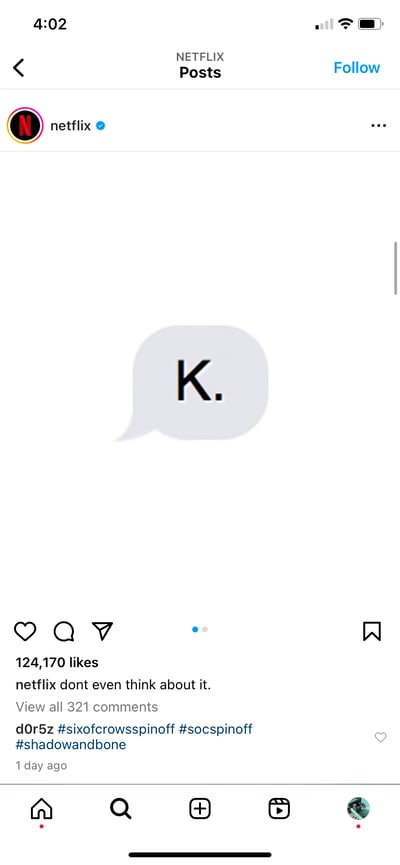
“They have such a clear brand voice, and you laugh along with them. They’re in on the joke, just like one of your friends,” she says.
Netflix’s voice is casual, trendy, and humorous while still staying on brand.
In the post above, the caption is funny, authentic, and relatable.
Calls to Action
Another way to increase the shareability of your caption and engage your followers is to ask questions or have some sort of call-to-action in the captions of your photos.
For example, you might write, “Double-tap if you find this funny,” or “share your story in the comments.”
In the example below, we asked followers of the HubSpot Instagram account to drop a tip on measuring social media ROI:
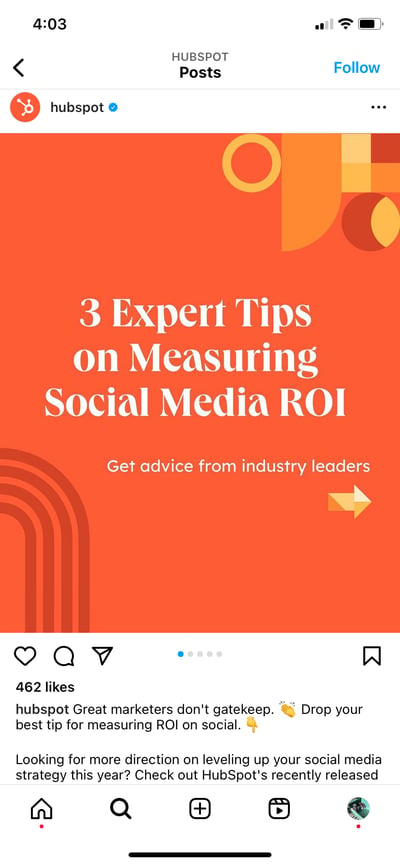
Relevant Emojis
Adding just a few relevant emojis can add even more personality to your posts. It could also make them even more noticeable on an Instagram feed. Many content creators and brands include witty text with relevant emojis to make the post pop. For instance, @ugarteaurelia uses taco emojis to highlight the topic of her post (tacos, of course).
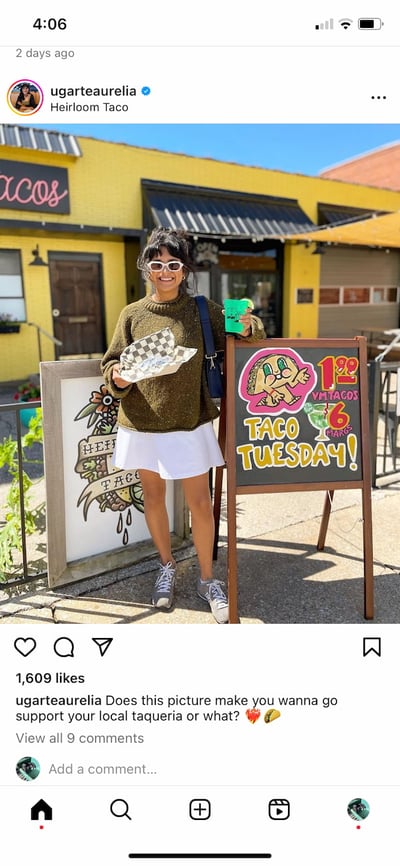
Along with the three items listed above, you’ll also want to include hashtags.
12. Optimize posts with relevant hashtags.
On Instagram, a hashtag ties conversations from different users who wouldn’t already be connected into a single stream. If you use relevant Instagram hashtags, your posts will gain exposure to a wider audience and help you become discoverable to potential customers.
The key to using hashtags effectively is to be selective and use them sparingly. Try to limit the number of hashtags per caption to around three. Similarly, don’t use “like for like” hashtags, like #like4like or #like4likes.
This is a shortcut tactic that’ll only leave you with low-quality followers.
To find the hashtags your audience might be using, do a little research on relevant hashtags in your niche or industry. The easiest way to do this research is in the Instagram app itself, in the Explore tab (i.e., the magnifying glass icon).
When you search for one hashtag, it’ll show you a list of related hashtags at the top of your screen.
For example, when I search for #digitalmarketingstrategy on Instagram, it shows me relevant hashtags like #digitalmarketingexpert, #digitalmarketing, and so on.
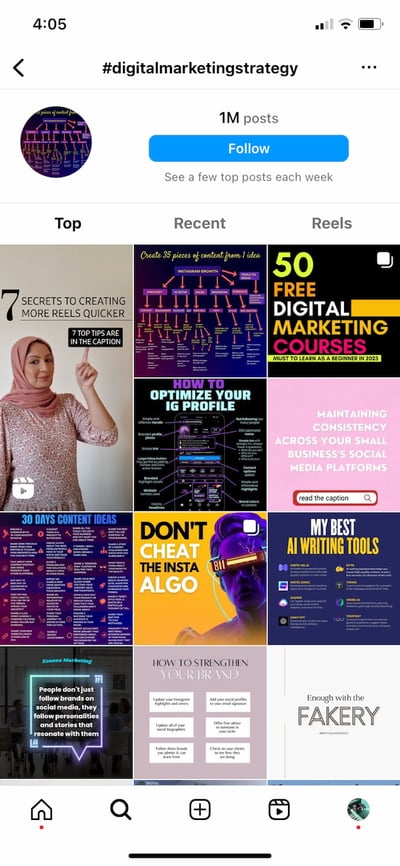
To help relate to your followers on a personal level, you might consider hopping on hashtag trends like #tbt (“Throwback Thursday”), #MotivationMonday, #TransformationTuesday, or other trending hashtags.
Once you build up a following, you can try creating your own hashtags — like your company name or a slogan that applies to your content. This is a great way to build up your brand on the platform and build a more cohesive presence.
13. Lean into trending content formats.
With the arrival of TikTok on the social media scene, short-form videos have become one of the most effective content formats on social media.
In fact, according to a HubSpot Blog survey, 85% of marketers who use short-form videos find them to be the most effective content format. And 95% of marketers who leverage short-form videos plan to increase their investment or continue investing the same amount in the following year.
That’s why it’s important to lean into trending content formats. After TikTok, Instagram came out with IG Reels, and this feature is a great way to post funny, relatable content.
When Instagram comes out with new tools, like IG Reels, don’t be afraid to use those features because they can help you gain Instagram followers.
14. Post content your followers want to see.
To gain your first 1,000 followers on Instagram, it’s important to know who your audience is. Once you’ve created your Instagram account, you should take note of which posts perform best.
Is it interactive content, behind-the-scenes stories, funny and relatable posts, or something else? When you have a general idea of what performs best, continue to create that type of content.
Additionally, Instagram has many tools and features you can use: IG Reels, Instagram Stories, Instagram Live, Highlights, etc. Begin by posting several types of content formats and see which one does best. Then, come up with a strategy and master that one tool. Doing so will help you create content your followers want to see and gain new followers.
15. Promote your Instagram.
Like the old adage about a tree falling in a forest, if you start an Instagram account without promoting it, is the account even real yet? Well, yes. But, you’ll have fewer followers.
One of the best ways to gain followers is to promote your Instagram account. Embed posts in your blogs, post on your other social media platforms, and share social links in your email newsletters. A great way to gain followers on one platform is to ask current followers on other platforms if they want to follow you somewhere else as well.
Additionally, to promote your Instagram, it’s important to get started with Instagram promotions and ads. This will help you reach a wider audience. I know it might seem like ads are only effective for selling certain products, but I’ve followed several business accounts because of a sponsored post I saw.
Here are a few articles to get you started:
16. Engage with users through follows, likes, and comments.
Instagram is very much a community, and one great way to get involved in that community is to find people who post pictures that interest you, follow their accounts and interact with their content. It’s the most natural way to draw attention to your own Instagram account.
This accomplishes two things: for one, when they get the notification that you’ve followed them, there’s a good chance they’ll check out your profile. This goes back to the importance of having great content on your account before you start reaching out to others.
Secondly, it means you’ll be seeing their recent posts in your feed, so you can Like and interact with them if you choose to.
As you build a following, celebrate your followers by responding to and pinning their comments, and even reposting their posts for user-generated content.
17. Cross-promote with influencers and brands with similar audiences.
Once you build rapport with the folks behind accounts with similar audiences to your own, consider collaborating with them.
Partnering with Instagram influencers and brands helps with discoverability, reach, and social proof.
For instance, influencer @lavishlyjackie posted a sponsored video with Olive Ateliers. The vintage shopping brand then used the video in their collateral.
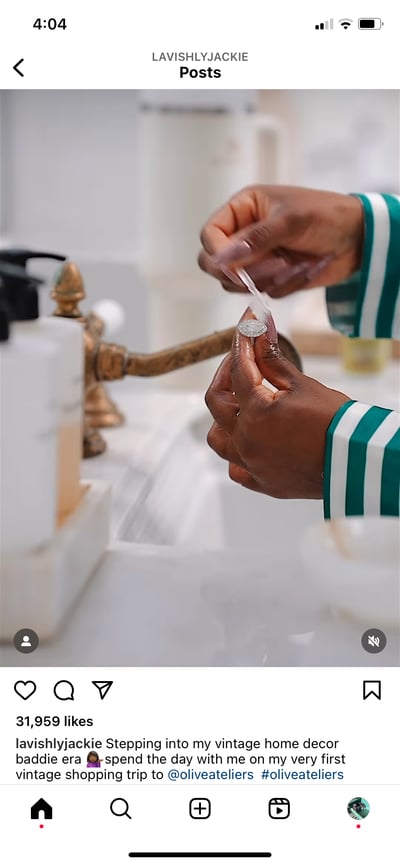
With this partnership, both accounts can expand their reach and gain new followers. It’s a win-win. However, be sure to create content that seems natural and makes sense for your brands and collective audience.
18. Run Instagram contests to encourage engagement.
Another great way to expand your reach while increasing engagement with your photos is to run an Instagram contest or giveaway. As part of your contest, you can ask users to follow your account, like, and/or comment on the post to be eligible to win.
I mean, come on. Who doesn’t love winning free stuff?
You can also add a user-generated content (UGC) element to the contest, too, where people post a photo of their own and use a specific hashtag.
19. Explore Instagram Stories’ interactive features.
Instagram has always given brands the platform to share beautiful, curated photos to represent their companies.
However, with the introduction of ephemeral Instagram Stories, brands can also share on-the-fly, behind-the-scenes looks for 24 hours that may not be as polished as a published photo, but give your brand more personality on the platform.
Just look at how Snapchat exploded a few years ago. Once platforms like Instagram and Facebook introduced similar features, it made those apps more valuable and interesting in the eyes of users. Although Snapchat pioneered this feature, Instagram Stories now has over 500 million daily users.
Along with sharing video clips and static images through Instagram Stories, users can also use polls, event reminders, and the “Ask a Question,” tool to gain more engagement and learn more about their audiences.
Once a user is verified or has over 10,000 followers, they can even include a link to a webpage within a story.
How Brands Can Use Instagram Stories
Instagram Stories disappear after 24 hours unless they are marked as a “Story Highlight.”
Highlighted stories will show up at the top of your profile between the photo feed and your bio.

Image Source
Here are a few other brands we recommend following to see what they’re sharing:
Dana Shultz (@minimalistbaker) publishes easy vegan and gluten-free recipes on her blog. Her Stories feature neat how-to videos of her making breakfast and testing out new recipes in her kitchen. The behind-the-scenes aspect of her Stories provides a lot of human context for her blog’s brand, and everybody loves a good how-to video.
Casper publishes quirky Instagram content to advertise their mattresses — without overtly doing so. The main theme of their content? Staying in is better than going out (because you can stay in and lay on a comfy Casper mattress, naturally).
They’ve even created a gallery for followers to use as backdrops for their Snapchat and Instagram stories to make it look like they’re out at a party when in reality, they’re laying in bed.
One of their latest Instagram Stories featured someone watching “The Sopranos” in bed, with the caption: “Who needs plans when you have five more seasons?”
This video supports Casper’s campaign to stay in bed with a very real look at what millions of people do when they’re hanging out at home.
Here are our tips for using Instagram Stories for your brand:
- Whether it’s funny, sad, or unique, be authentic. Your photo gallery is where content can be perfect and polished. Instagram Stories are for the raw, unscripted, and unretouched. Use Stories to share the other side of your brand that followers might not be able to see elsewhere. Do you have a dog-friendly office? Is your team trying out the latest challenge? Start filming to showcase the more human side of your brand.
- Go behind the scenes. These are by far our favorite types of content for ephemeral video sharing. Show followers what goes into the planning of an event or the launching of a product, and make it fun. Your followers want to feel included and in the know. You could also use Stories to cultivate a brand loyalty program that only rewards people who check out your content.
20. Use the Instagram Live feature.
Instagram also lets users record and share Live videos, another content format that’s proven to be hugely popular on other social networks. What’s unique about Live videos on Instagram? They disappear when users stop filming.
This authentic, bi-directional experience lets brands share unscripted, raw moments with their audience to incorporate human elements into a social media platform that’s highly edited and polished in its traditional use.
Since the Live feature launched, Instagram has added even more features that may enable further engagement or interactions from viewers, such as:
- Request feature to go live with the live account
- Pinned comment
- Q&A box
- Up to four accounts on Live at a time
- Filters
Live video is a growing trend across a variety of social media platforms, so if something interesting is happening, start rolling. Whether it’s an event, a team birthday party, or behind-the-scenes footage, your devoted followers want to see what you’re up to.
And if you want to make it even more interesting, you could collaborate with an influencer or another brand to host a Live. With people that your audience is interested in, you can promote this Live event, and then host it on your profile.
Promoting this type of event will help you tap into someone else’s audience while interacting and engaging with your followers by answering their questions and talking to them during the Live.
21. Share your profile link on your website and social media channels.
Have a website? Newsletter? YouTube channel? Make sure you include a link to your Instagram on every single platform.
The first place you’ll want to make sure to add an Instagram badge is your website, specifically your footer and “About Us” page.
Here’s what the badge could look like:

If your brand has brick-and-mortar locations, put out a good ol’ print call-to-action letting people know you have an Instagram account and encouraging them to follow you. You can also place them on your business cards. You might even offer a discount code for doing so.
Also, be sure to promote your Instagram account on your other digital platforms. Chances are, the folks who already follow you on Facebook and Twitter will also follow you on Instagram without much prodding.
Let those followers know you’re on Instagram and encourage them to follow you there.

Image Source
In this example, wine company The McBride Sisters encouraged their email subscribers to follow them on Instagram with a simple CTA: “Join the community.”
22. Post user-generated content.
Similar to cross-promotion, brands can publish user-generated content to show appreciation for existing customers and generate social proof at the same time.
If I see a regular person endorsing a product on Instagram, I’m more likely to believe they really like the product.
The same is true for most consumers. That’s why sites like Yelp are so popular.
Ultimately, user-generated content can be an excellent strategy when trying to increase brand awareness and trust in your products or services.
For instance, Bevel reposted a video from blogger Rickey Scott using and recommending their products to their 600+ followers.
Posting Scott using Bevel is a smart move.
Firstly, the product is designed with black men in mind. Having Scott, who is part of the brand’s target demographic, recommend the product serves as the social proof the brand wants.
Furthermore, part of Scott’s audience will likely fall within Bevel’s target audience. Simply put, the two brands have similar audiences and brands that align well, which is why it’s a good opportunity for Bevel to promote Scott’s content.
23. Diversify your audience to resonate with different types of users.
As your followers grow, it can be tricky to identify what content types will resonate with them. With this in mind, divide your audience into sub-groups and target your content to various demographics.
For instance, if you have 200K followers, those followers probably come from different regions of the world, have different interests and hobbies, and likely have different careers. Rather than post all-encompassing content that will satisfy all your followers at once, conduct some analytics research to separate them into smaller sub-groups.
Take Starbucks as a good example of this. Starbucks has millions of followers. There’s no way the global coffee brand can post content to satisfy millions of people at once — and it doesn’t try to.
Instead, Starbucks regularly posts more exclusive content geared towards particular groups, such as this post they published showing a typical work day at a Starbucks location:

This post won’t appeal to the majority of Starbucks followers who don’t work from home, but that’s OK.
You don’t always need to post content to please everyone. Instead, demonstrate your company’s ability to connect and engage with sub-groups and post what aligns with your own brand’s values.
Creating a work-friendly atmosphere is something that matters to Starbucks, so by posting about coffee shop work days, they’re doing more to demonstrate their values than they are appealing to everyone. Which is kind of the point, isn’t it?
24. Apply for a verification badge.
When an account on Instagram is verified, it has a blue dot, called a badge, next to the username. When another user comes across this profile or finds the verified username in search, the blue dot confirms to them that the account is the business, individual, or brand that it’s claiming to be. Author @angiethomas has one such badge.
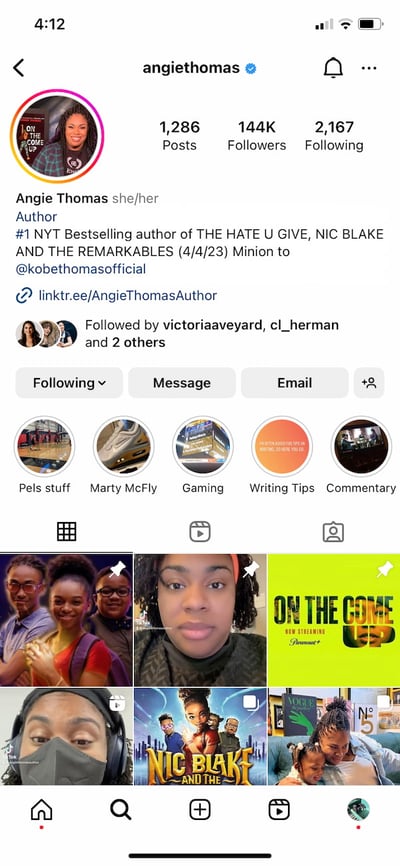
While Instagram has a list of eligibility requirements for the badge, the platform does allow users to apply for one. You can learn more about that process on Instagram’s Help Center.
25. Create your own filters and badges.
When it’s time to promote a new product or feature, creating your own filters, stickers, or badges can help you reach a new audience. You can learn how to create your own filter or sticker to jazz up your Instagram Stories.
The best way to do this is to use these on highly shareable posts that followers will want to add to their own Stories. This way, you’ll reach their audiences and your users will promote your page for you.
26. Tag relevant users.
Another way to gain more followers on Instagram is to tag relevant users in your posts. Your posts will then show up in that person’s tagged posts, and anyone who looks through there will find your page (and hopefully, follow).
However, it’s important that you only tag people who are in the photo, or relevant to the photo. For example, many times, influencers tag the clothing or makeup brands they wore in a photo.
27. Post content that’s meant to be re-shared.
Each post on your Instagram should have a purpose. It could be to generate likes, comments, engagement, shares, etc. However, you can’t expect followers to re-share content just for the heck of it. There needs to be a reason.
Because of this, reverse engineer your Instagram posts. Think, “What type of content would my audience re-share?” Then, create that content. It could be a quote, a meme, an infographic, statistics, etc.
To gain new followers, you should post content that’s meant to be re-shared, so that when others do re-share it on their own Instagram Stories and tag you, their audience will find you and follow you.
28. Get on the Instagram Explore page.
Getting on the Instagram Explore page is easier said than done. We get that. However, creating posts that are aimed at getting on the Explore page means you’ll be creating easily shareable and trendy content.
Think about viral trends and create a video that your audience might engage with. Additionally, use hashtags and tag other users and brands in those posts.
Instagram’s Explore Page algorithm also seems to grab content that has more engagement, especially if said engagement happens in the first few hours of posting. In Instagram’s case, quality is better than quantity, and getting interaction from influential users (i.e. having a higher follower count) is one of the best ways to do it.
29. Share educational content with Instagram carousels.
Similar to creating content that’s meant to be re-shared, you can also create educational content in the form of Instagram carousel posts. Instagram carousels have become a popular way to educate audiences on an idea or topic.
Think about what you can educate your audience on and then create a simple Instagram carousel post with an engaging title that entices users to click on the post.
With this type of content, you can share the post on your Stories, and then hopefully other users will be compelled by the content to share on their Stories as well.
30. Host an Instagram account takeover.
When you’re collaborating with influencers and other brands, think about hosting an Instagram account takeover. You can have an influencer take over your Stories for the day, and promote this on their own Stories.
Then, you’ll get their followers to follow along with the Stories and hopefully follow your account.
Additionally, you can ask an influencer or brand if you can take over their Stories, and interact with their audience as a way to promote your own account.
Quality Over Quantity Still Matters
Ultimately, it’s important to focus less on the number of followers you have, and more on the quality of content you create. Your audience will grow naturally if you put effort and time into creating engaging, informative, or inspirational content without worrying about “quick fixes” for boosts in followers.
You want to play the long game on Instagram, and that starts with focusing on what you can control: the quality of the content you produce, the messages you promote, and the brand you build.
Editor’s note: This post was originally published in February 2016 and has been updated for comprehensiveness.


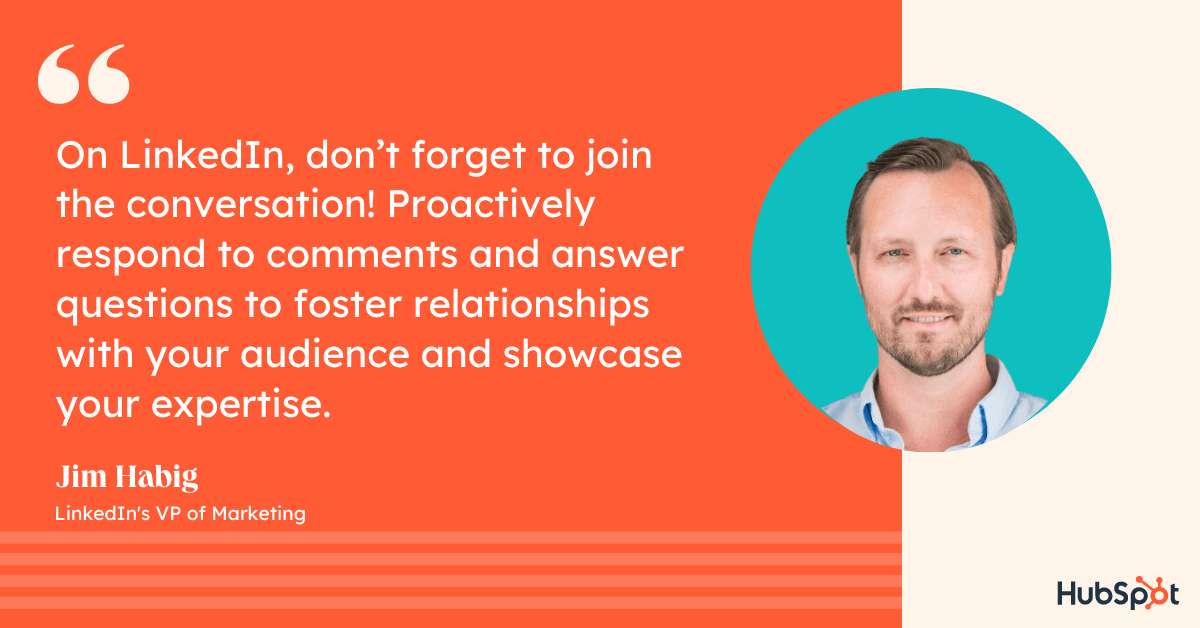
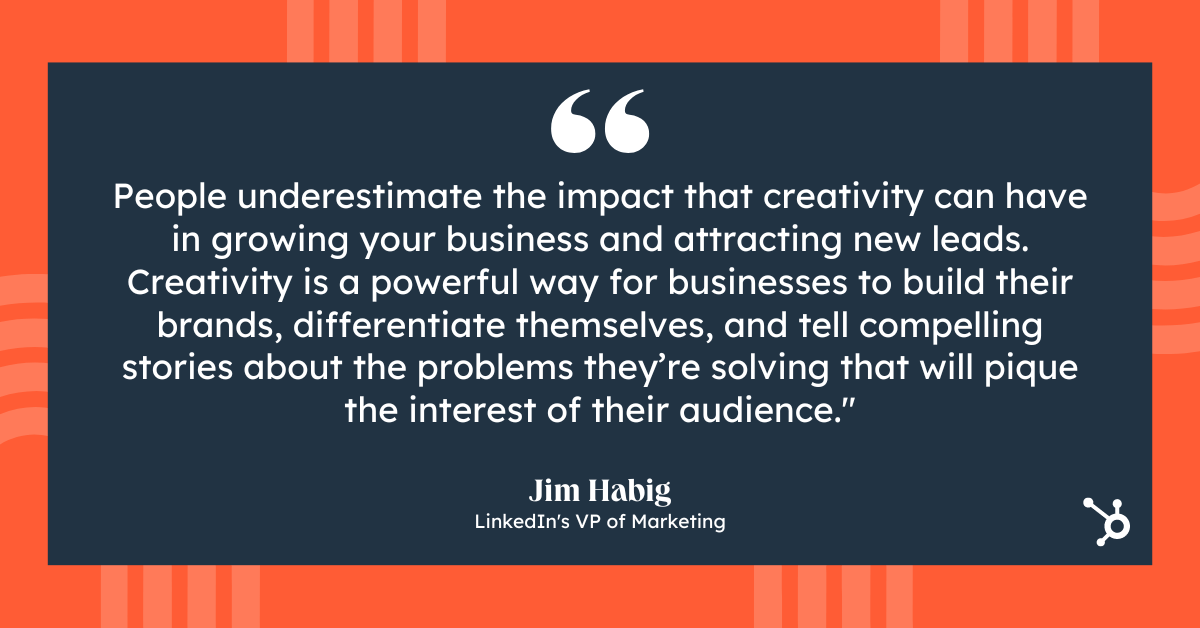
![]()

![Free Guide: How to Use LinkedIn for Business, Marketing, and Networking [Download Now]](https://i4lead.com/wp-content/uploads/2023/04/ddd33609-1733-44d2-a811-a5435b201ffe.png)
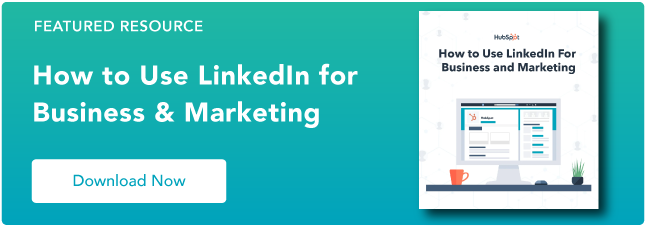
![Free Guide: How to Use AI in Content Marketing [Download Now]](https://i4lead.com/wp-content/uploads/2023/04/3e25e192-30c3-40c1-a7da-a4d054c9e157-8.png)

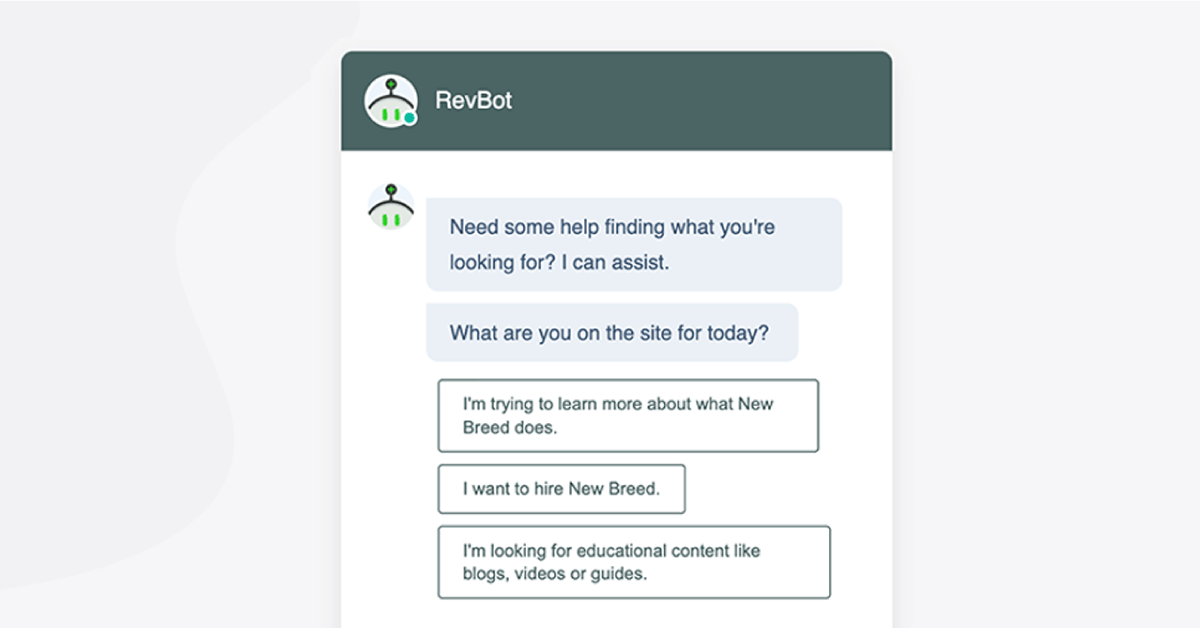

![Download Now: 150+ Content Creation Templates [Free Kit]](https://i4lead.com/wp-content/uploads/2023/04/5478fa12-4cc3-4140-ba96-bc103eeb873e.png)
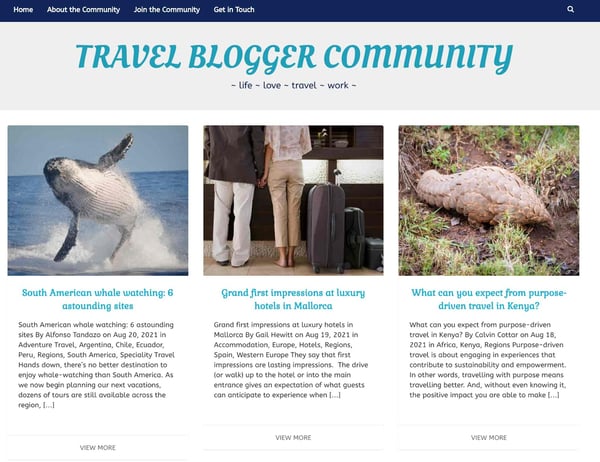

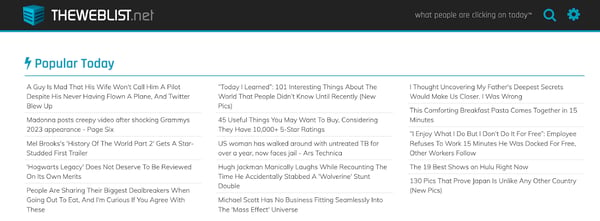



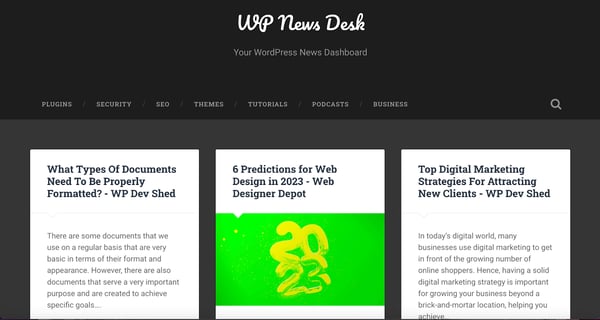
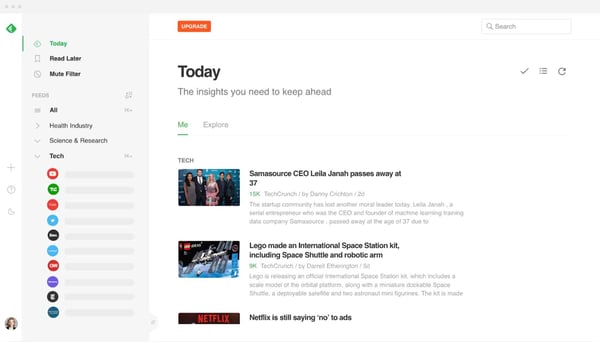
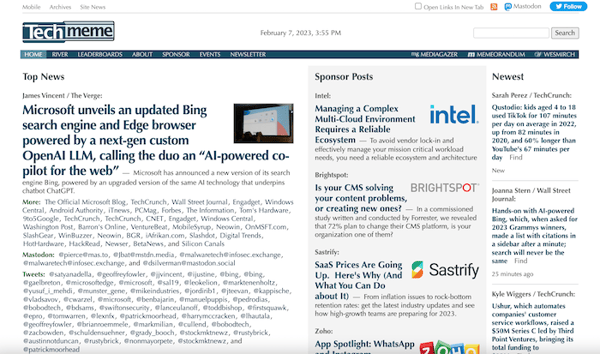
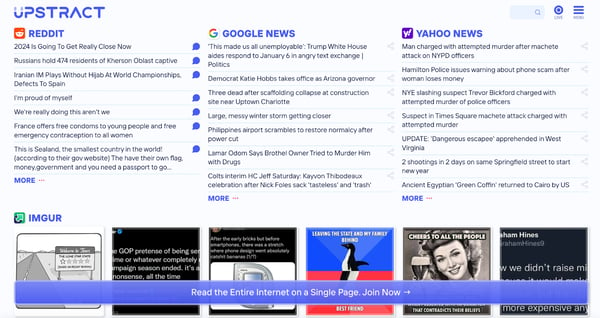
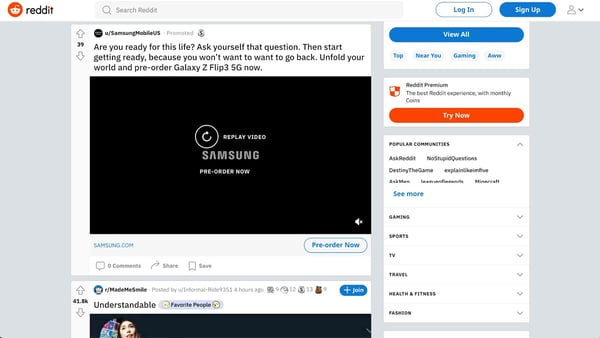
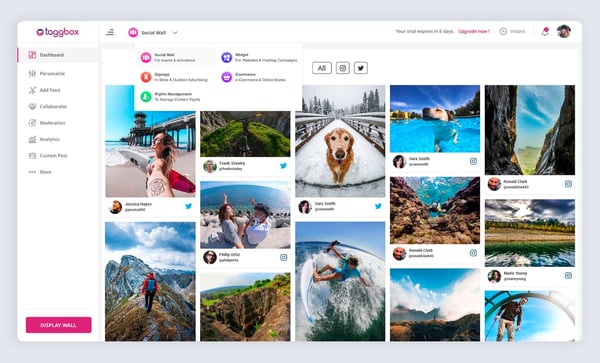
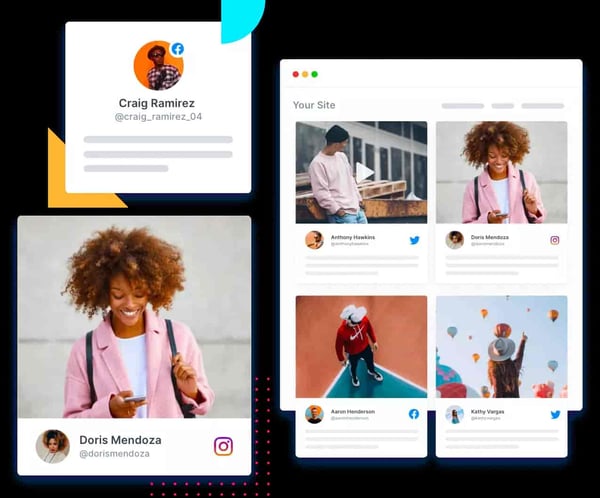
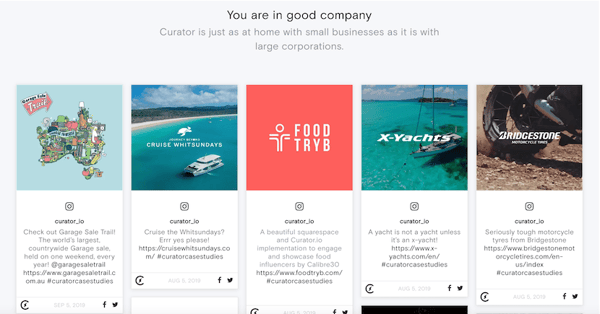


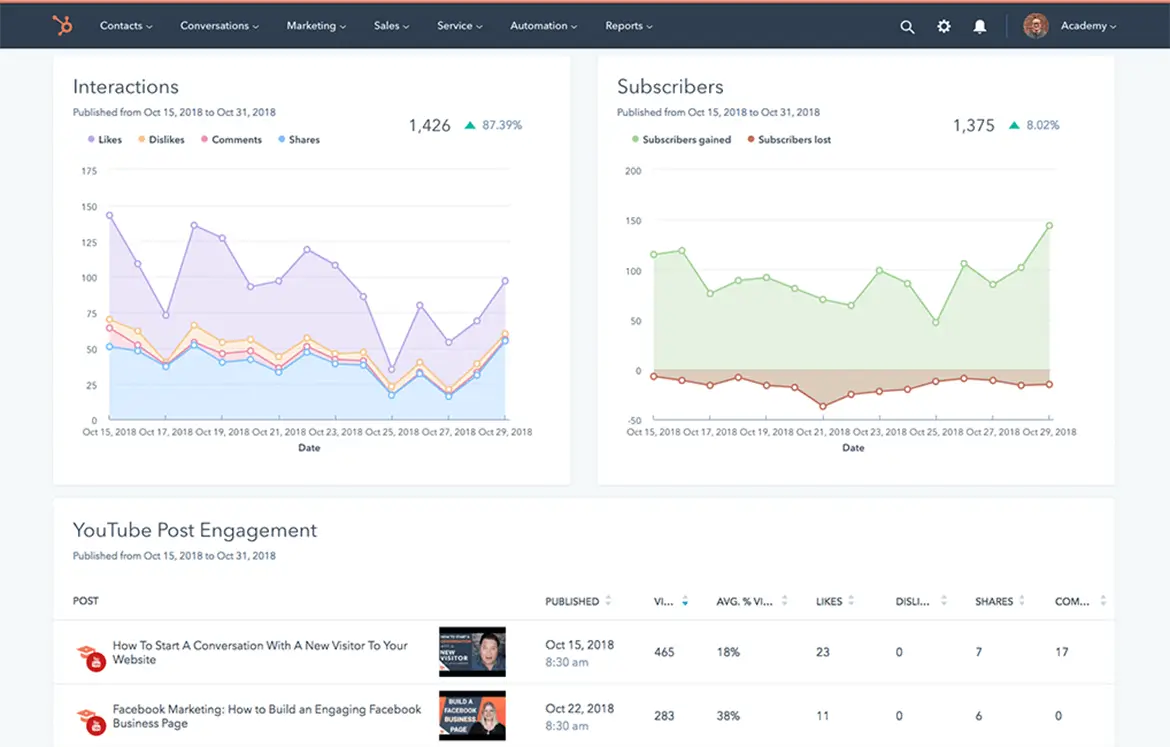
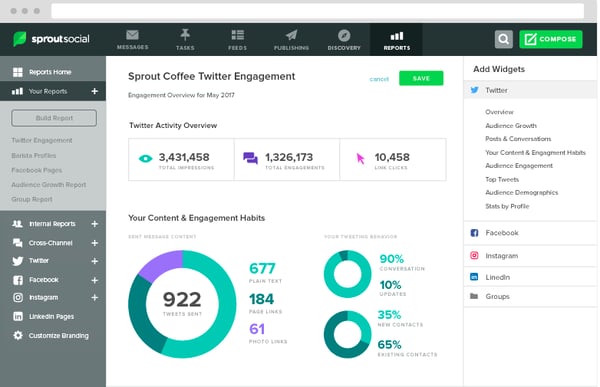
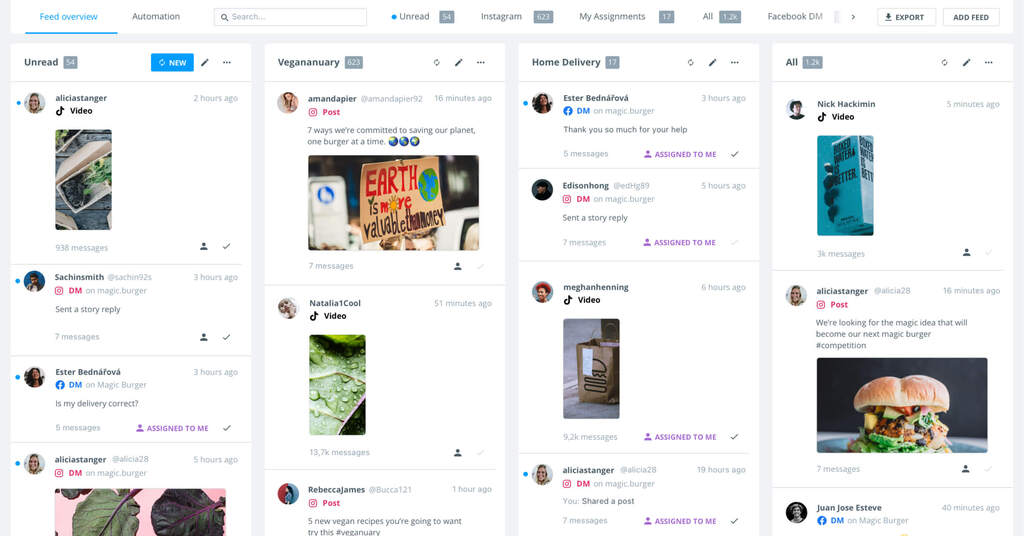

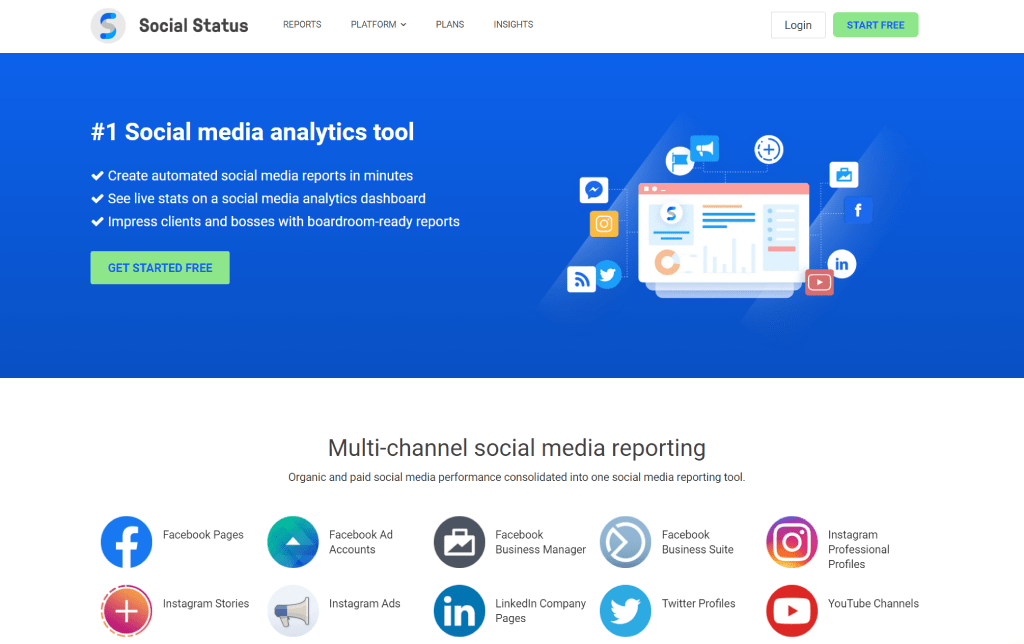
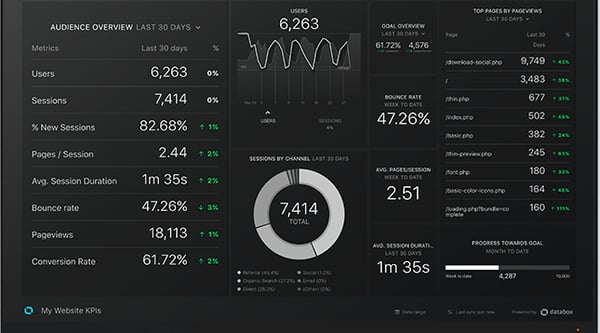
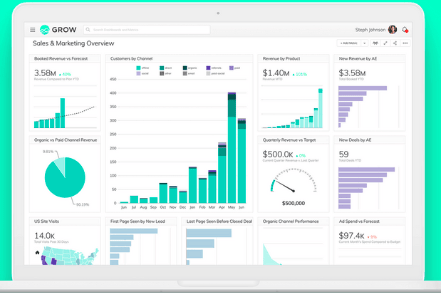
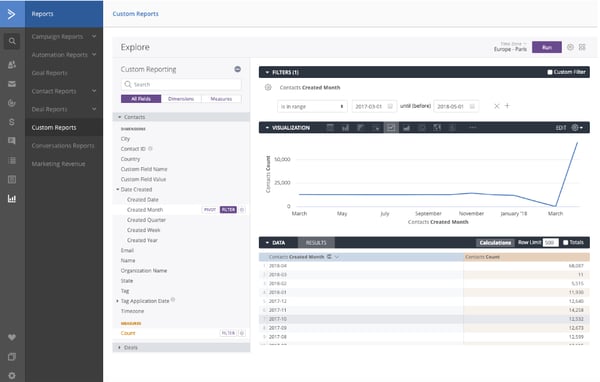

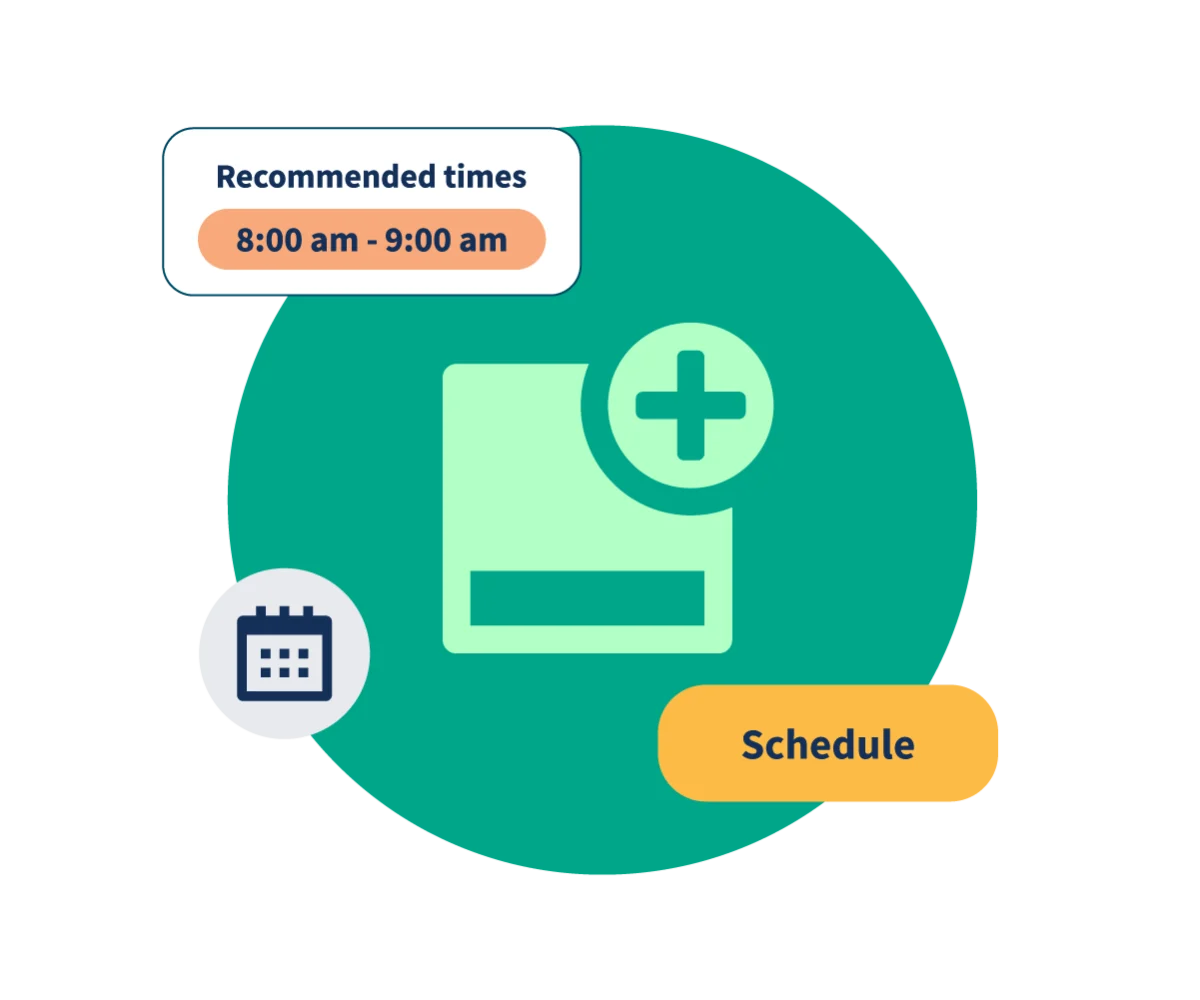

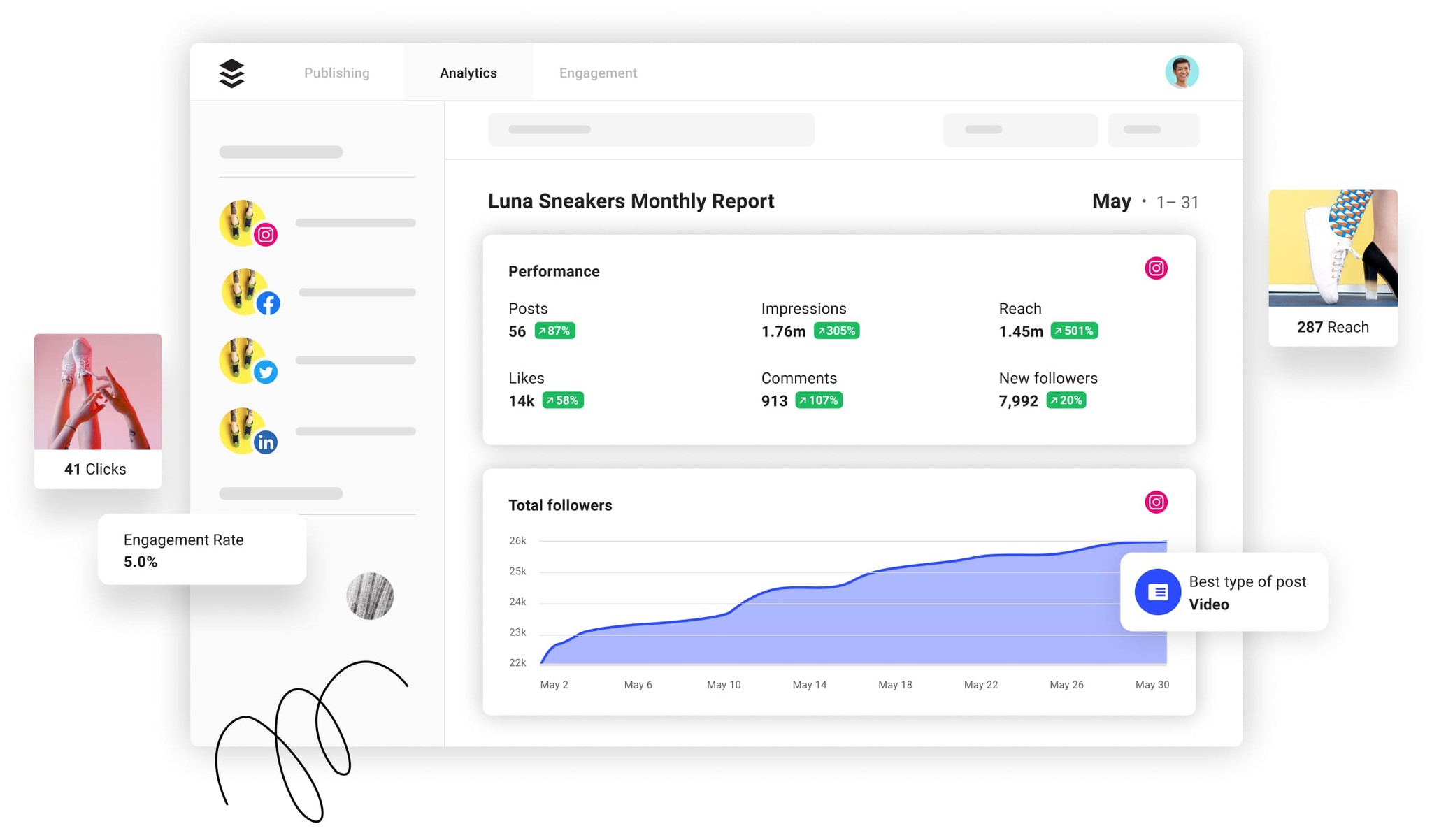
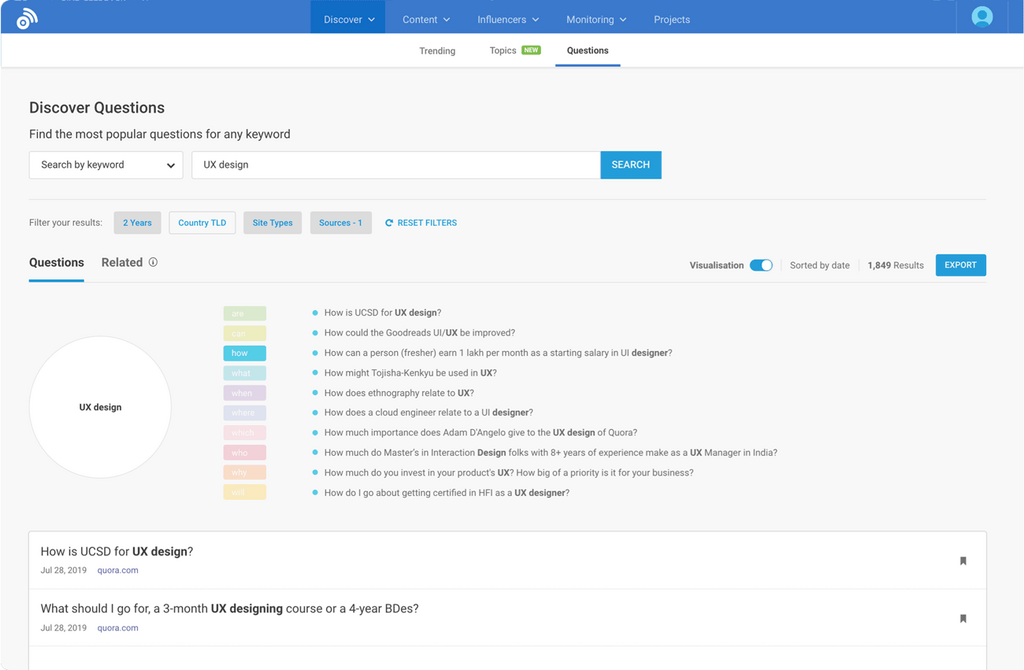


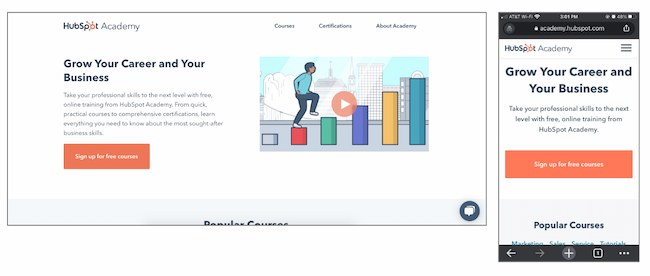

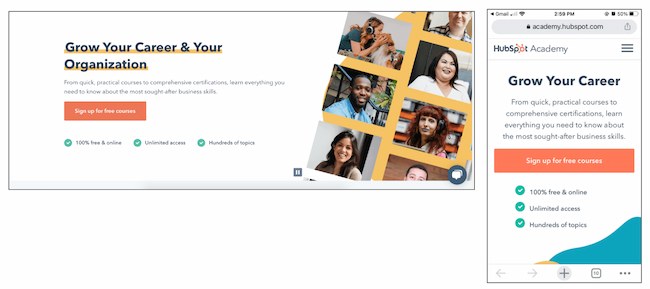
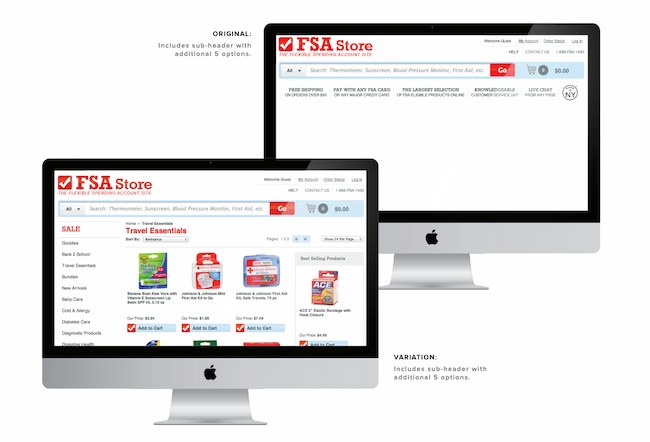
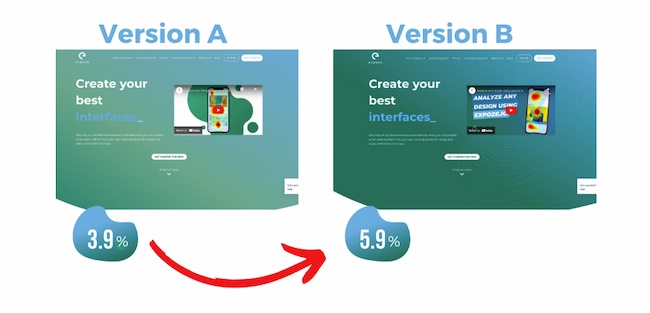
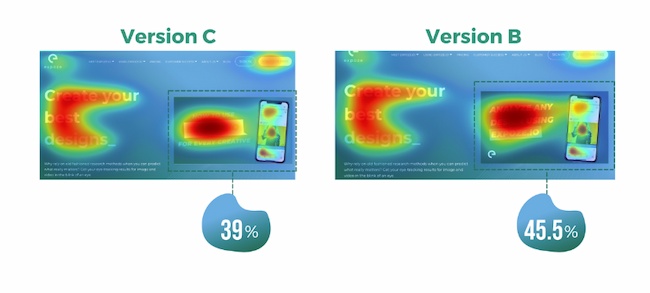
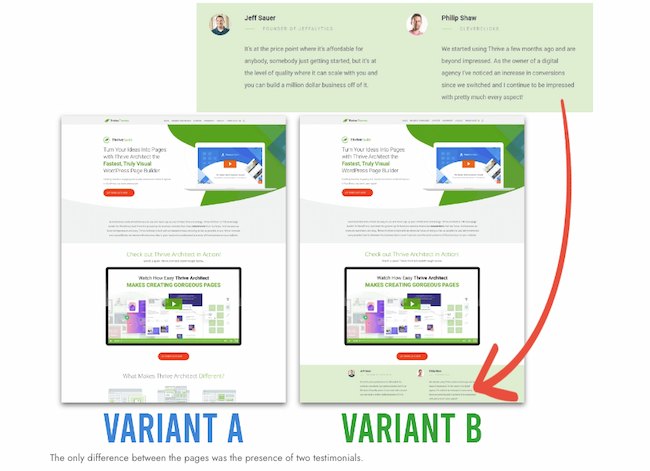
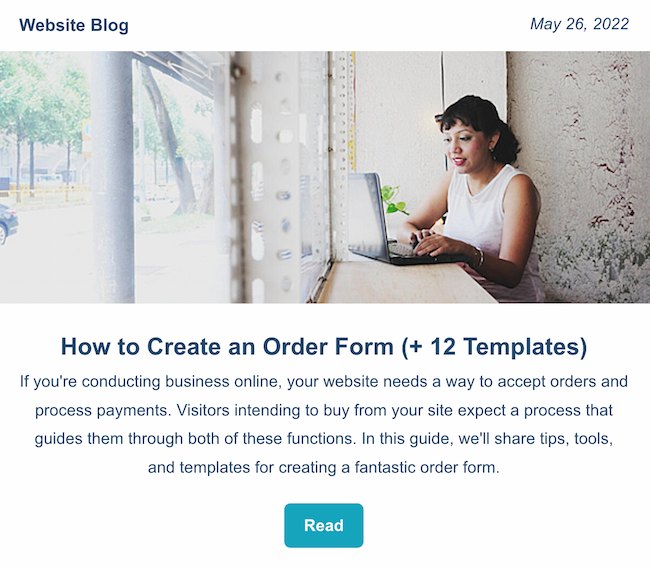
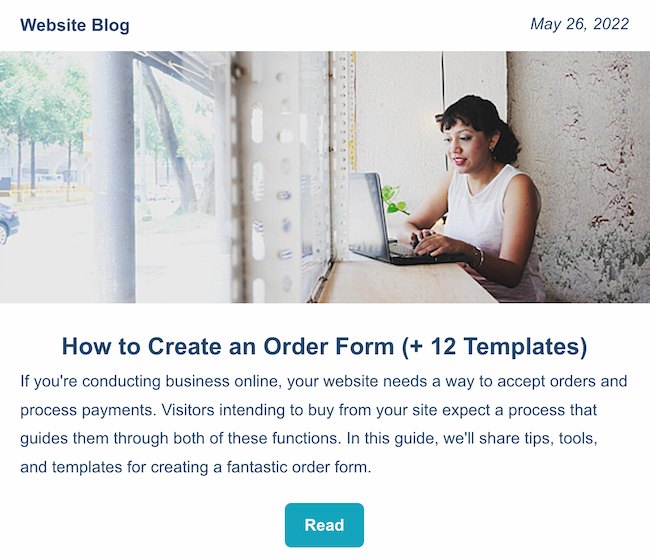
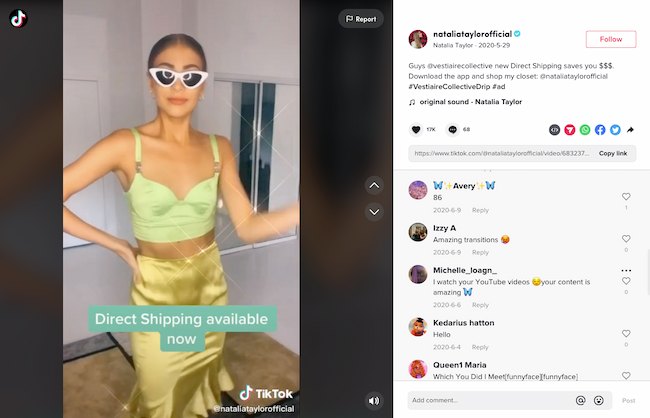
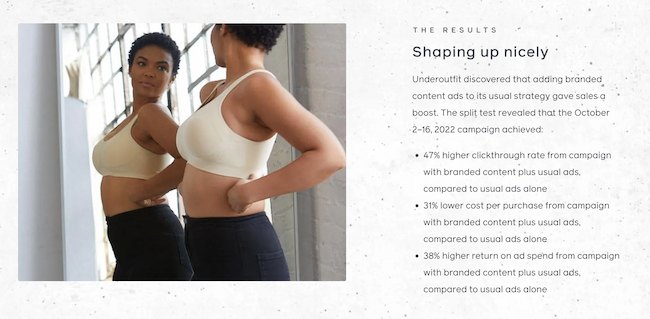

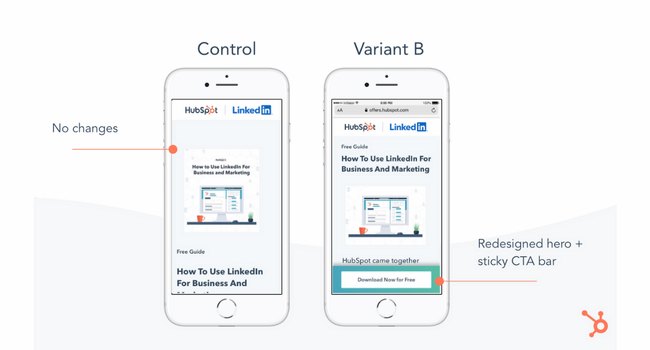
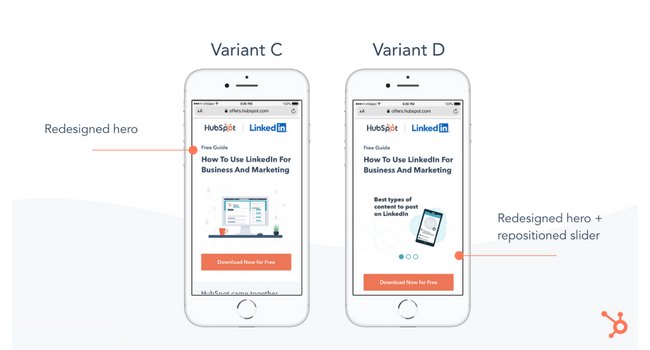
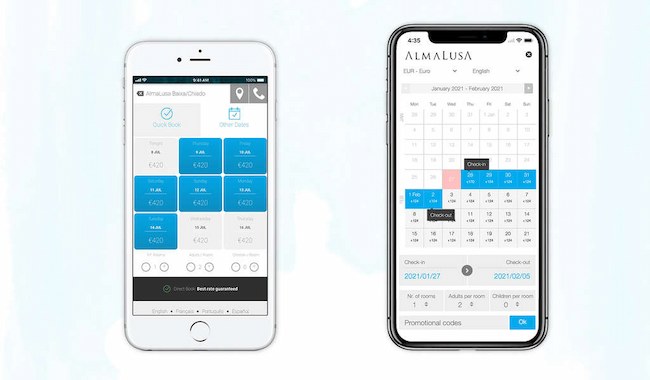
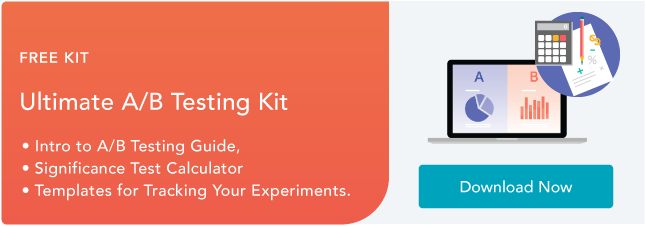
![Free Guide: How to Use AI in Content Marketing [Download Now]](https://i4lead.com/wp-content/uploads/2023/04/3e25e192-30c3-40c1-a7da-a4d054c9e157-7.png)
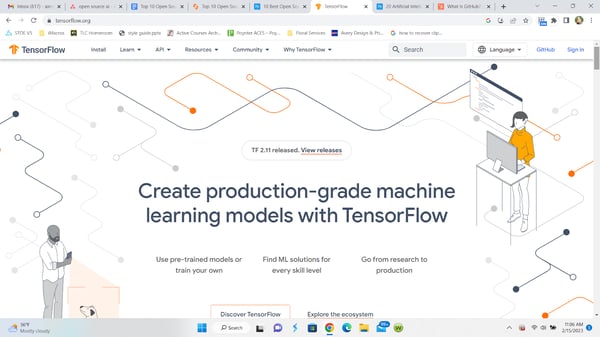
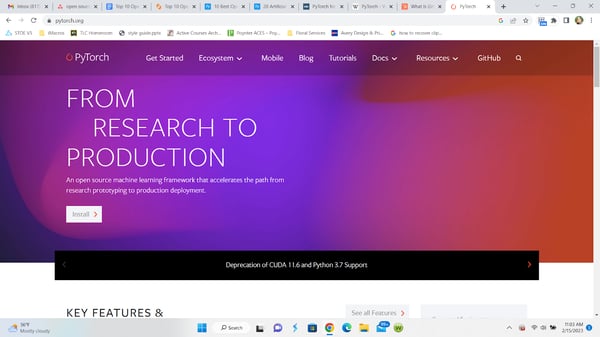
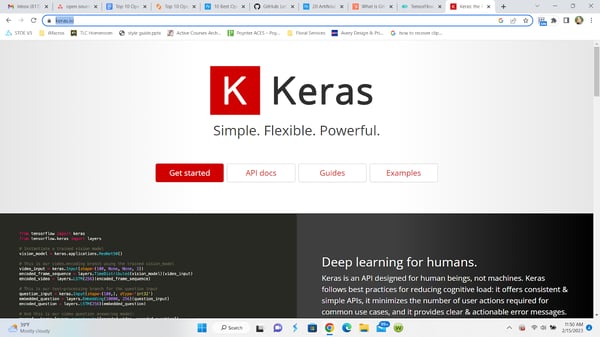


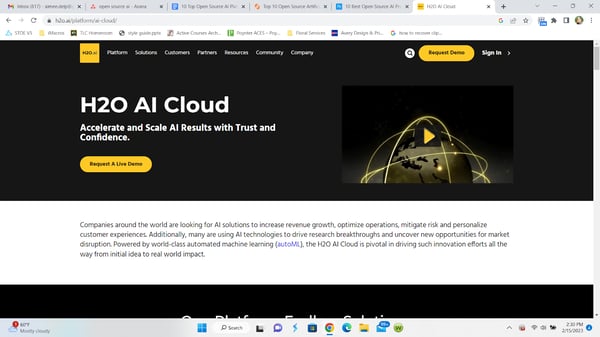
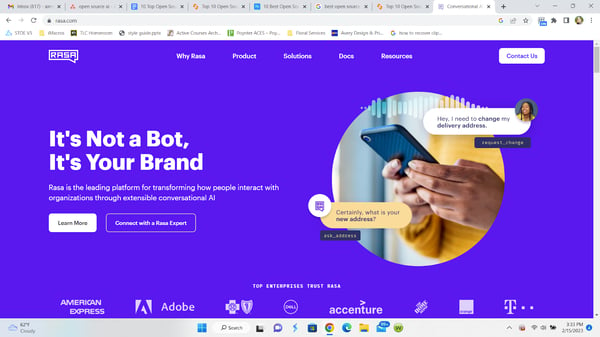
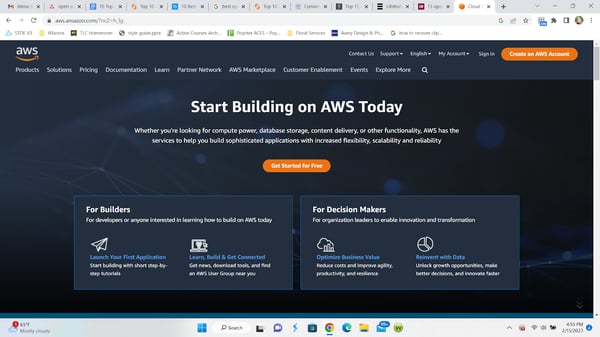
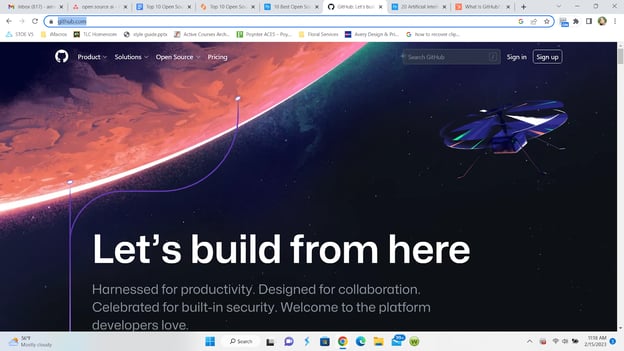
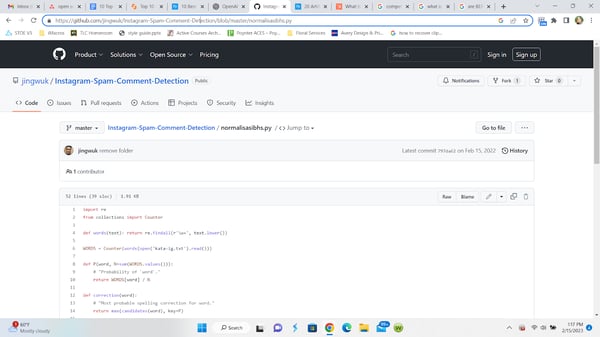


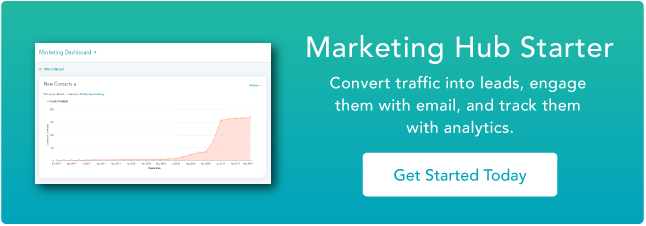
![New Data: Instagram Engagement Report [Free Download]](https://i4lead.com/wp-content/uploads/2023/04/9294dd33-9827-4b39-8fc2-b7fbece7fdb9.png)















